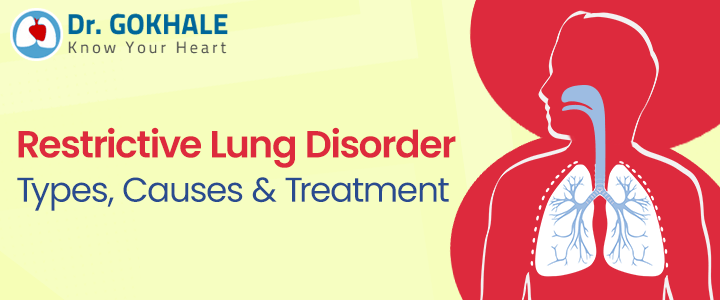Wonder what happens when the lungs are unable to expand as they should? It is referred to as a restrictive lung disorder. It prevents the lungs from filling up with air, creating reduced volume and thus distress in breathing. Knowing the types, causes, and treatment of restrictive lung disorders is critical to the management and enhancement of patients’ quality of life.
Types of Restrictive Lung Disorders
There are two main types of restrictive lung disorders: intrinsic and extrinsic. Intrinsic restrictive lung diseases include those due to diseases that directly affect the lung tissue, such as interstitial lung disease, pulmonary fibrosis, and sarcoidosis.
In these conditions, scarring and inflammation of the lung tissue occur; as a result of the scarring, it loses its elasticity and is not able to expand. Contrasted with intrinsic restrictive lung disorders, extrinsic ones are caused by factors outside the lungs, thus limiting their expansion.
Under this category are obesity, scoliosis, and neuromuscular diseases. Though both result in restricted airflow and impaired respiratory function, they originally have different causes.
Causes, Symptoms, and Diagnosis
The commonest symptoms of a restrictive lung disorder are breathlessness, particularly during exercise, dry cough, and easy fatigability. In the advanced stages of illness, patients may even have breathlessness at rest. Diagnosis consists of an amalgamation of history, physical examination, and tests of pulmonary function.
Spirometry is one of the major diagnostic tools that record the amount of air a person can inhale or exhale and also how fast he can blow out. On spirometry tests, reduced lung volumes reflect restrictive lung disorders. Imaging studies may include chest X-rays and CT scans, all of which pinpoint the probable cause and extent of lung damage.
Treatment Options
The treatment for a restrictive lung disorder is mainly aimed at the relief of symptoms and improvement in lung function. It varies depending on the underlying cause. In intrinsic disorders like pulmonary fibrosis, medications like corticosteroids and antifibrotic agents are administered to reduce inflammation and slow down the progression of the disease.
In cases where the inflammation is the result of an autoimmune response, then immunosuppressive drugs are quite effective. For extrinsic disorders, management of body weight through diet and exercise relieves symptoms in obese patients.
Patients with neuromuscular diseases benefit from physical therapy and respiratory muscle-strengthening exercises. In those who have inferior lung function, lung transplantation offers a new lease of life where the patient with end-stage lung disease is provided a new pair of lungs.
Improvements in the Treatment
With the recent development of medical research, new treatments and therapies have been investigated for restrictive lung disorders. New drugs acting on mediators of certain pathways involved in the fibrotic process are being studied in clinical trials with promising results.
More importantly, newer surgical intervention techniques and post-transplant care have further developed the outcomes of lung transplant patients. Programs for pulmonary rehabilitation, which include exercise training, education, and support, assume prominence as an integral part of comprehensive care for patients with restrictive lung disorders. These programs are meant to help patients improve their overall physical fitness, manage their symptoms, and increase their quality of life.
Conclusion
The diagnosis and treatment of restrictive lung disorders require a comprehensive approach to raising patients’ quality of life and lung function. Continuous medical research and developing treatment options bring a ray of hope to suffering people in such conditions. Seeking consultation from experts becomes imperative for patients in situations where specialized care and treatment are required.
Dubbed the best lung transplant surgeon in Hyderabad, Dr Gokhale is a legendary figure in India, providing peerless expertise in the management of restrictive lung disorders. With years of experience and a strong background in patient care, he remains one of the leading persons people come to see after coming to India in search of advanced treatment facilities.
 Ask Doctor
Ask Doctor
